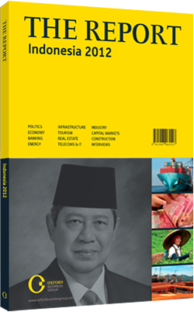Footing the bill: Development funding is being met by a mix of sources
One of the biggest issues facing Indonesia’s infrastructure push is how it will be financed. The government says that it wants to build and pay for about a third of its public-works priorities, and is currently in the process of attracting investors willing to share the risk, cost and the construction responsibility for the remainder through public-private partnerships (PPPs). Indonesia boasts a modern financial sector with a growing list of options beyond traditional bank financing. Private-equity firms are already participating; the country’s debt market is growing in size and sophistication, as is its stock market. But because infrastructure finance is a longer-term proposition, the banks will have to move beyond their comfort zones if they wish to participate. Profiting from toll roads, railroads, ports and other such projects typically takes more than 10 years, and banks’ lending departments will likely have to adjust. The Indonesian government has anticipated the problem and has set up several risk-sharing mechanisms to make the country’s lenders, as well as potential private sector partners, keener to participate. The Indonesia Infrastructure Guarantee Fund was created by the Ministry of Finance in 2010 in response to concerns from partners about the bankability of projects. A similar organisation, the IIF, is a non-bank financial company created and funded by a mix of public and private partners and donor agencies. It may end up playing a wider role than simply helping to provide guarantees. Sarana Multi Infrastruktur (SMI) is another government-created agency that will provide guarantees, loans, or equity investments. “Indonesia lacks project finance institutions providing long-term project debt, said Raj Kannan, of infrastructure advisory firm Tusk. “The roles of SMI and the IIF are expected to change this drastically.’’ Others, including the Asian Development Bank and the International Finance Corp, the private-equity arm of the World Bank, have agreed to participate in various roles as well. One of the biggest challenges for banks will be insulating themselves against currency fluctuations and maturity mismatches. Many potential PPP partners are likely to be foreign companies, often from countries with lower interest rates than on offer in Indonesia, where the cost of borrowing is slightly higher than 10%.
Indonesia has several banks considered credit-worthy on international debt markets which could offer foreign companies loans at internationally competitive rates, but the challenge for the banks in such cases will be to borrow from its creditors on a long-term basis, because its customers want long-term loans as well, and to use currency swaps or other methods to protect themselves from the risks inherent in currency fluctuations. Banks also increase their risk by handing out long-term loans if they do not have sources of long-term cash available as well, because a sudden increase in short- or medium-term lending rates could wipe out any potential profits from a long-term loan with an interest rate locked in.
Such maturity mismatches were an exacerbating factor in the recent financial crisis, as many banks had been financing long-term concerns with short-term financing in a different currency. For example, one alternative source of financing might be debt financing. Meanwhile, the three major international debt ratings agencies, Standard & Poor’s, Moody’s and Fitch, have signalled that Indonesia’s ratings are likely to be boosted to investment grade in 2012, which would lower the cost of bond sales. Finally, Indonesia was announced as the first beneficiary of the ASEAN Infrastructure Fund, which was created in 2011. The $500m fund will deliver loans to six infrastructure projects per year that physically link up the ASEAN economies. This particular project will expand roll-on, roll-off (Ro-Ro) shipping lanes that connect Davao in the Philippines to Bitung in North Sulawesi. Moreover, shipping lanes are due to be opened in other ports in Malaysia, Brunei and Thailand later. Although this unlikely to become a major source of financing for Indonesia, the fund shows how the challenge of developing infrastructure is now being actively tackled at the regional and national levels.
You have reached the limit of premium articles you can view for free.
Choose from the options below to purchase print or digital editions of our Reports. You can also purchase a website subscription giving you unlimited access to all of our Reports online for 12 months.
If you have already purchased this Report or have a website subscription, please login to continue.

